On November 22, 1900, Trinity Founder Sr. Julia McGroarty, SNDdeN, and the small community of Sisters of Notre Dame and Trinity students who had occupied the south wing of Main Hall just a few weeks earlier gathered with Church officials and hundreds of supporters for the dedication of Trinity College.
On Sunday, November 22, 2020, at 2:00 pm the Trinity community will gather once more — this time virtually via livestream — to mark the 120th Anniversary of the dedication of Trinity. During this celebration, we will have a special moment for the unveiling of the portrait of our late beloved President Sr. Margaret Claydon ’45, SNDdeN on the Marble Corridor. To commemorate the 120th Anniversary and to pay tribute to Sr. Margaret whose death in February 2020 is a loss we still feel throughout the Trinity family, we invite alumnae and friends to make a special gift to the Sister Margaret Claydon Scholarship Fund to support future generations of Trinity Women who exemplify her keen intellect, courageous leadership and deep faith.
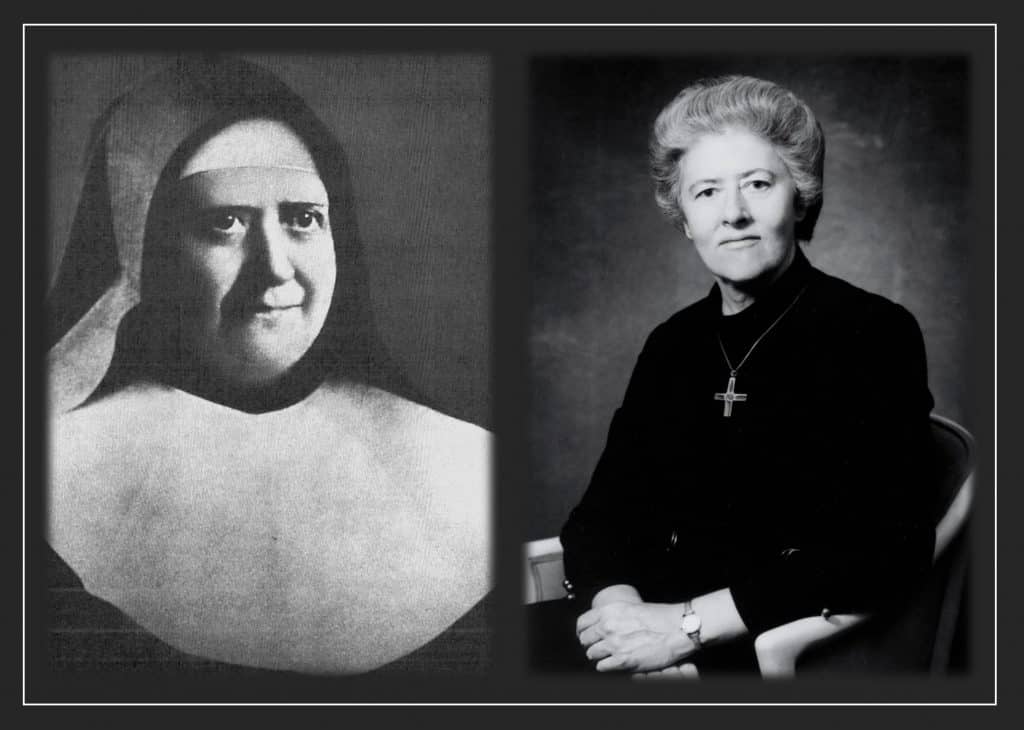
The 120th Anniversary Program:
Welcome: President Patricia McGuire ’74
Opening Prayer: Sr. Ann Howard, SNDdeN, Director of Campus Ministry
Significance of this Anniversary: President McGuire
Reflections on Sr. Margaret Claydon: Video
Unveiling of Sr. Margaret portrait
Closing Remarks: President McGuire

1900 Dedication Timeline
On October 25, 1900, Sisters of Notre Dame took up residence in the unfinished South Hall of Main Hall at Trinity. In Sister Columba Mullaly’s history of Trinity, we learn that the first faculty meeting took place on October 27, 1900.
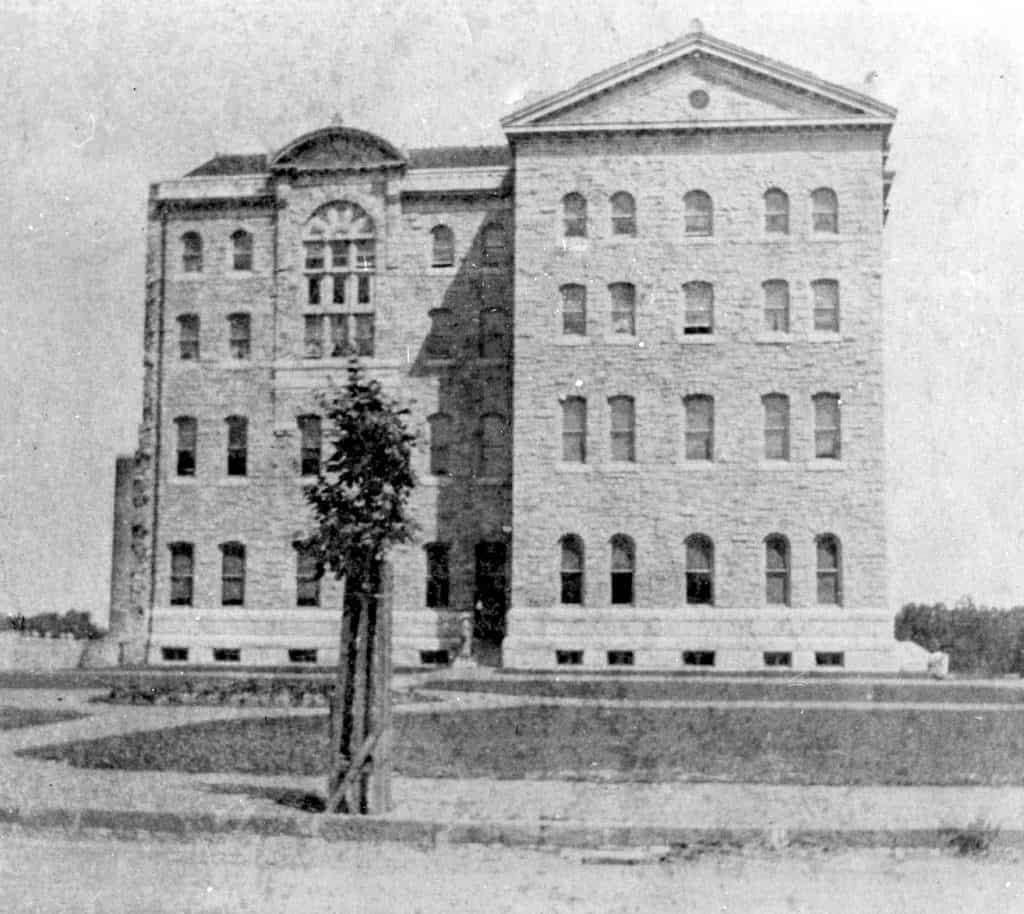
On November 3, 1900, the first four students arrived. The moment was memorialized in the recollection of Elsie Parsons ’04, who became Sister Wilfred du Sacre Coeur:
“And this is how Trinity first opened its doors to its students. It was Saturday noon, November 3, 1900, when amidst a depressing downpour of rain four students and one sister wended heir muddy way from the car track to the front door….” (The full essay is reproduced on pp. 66-67 of Sister Columba’s history.)
Classes began on November 8, 1900. In a moment that students would emulate across the ensuring twelve decades, the first student protest occurred shortly thereafter concerning the rigorous schedule of study that had every hour planned from 8:30 am to 9:30 pm.
November 22, 1900 was a momentous event. With Sister Superior Julia McGroarty, her co-Founder Sister Mary Euphrasia Taylor and the other SNDs looking on, Cardinal James Gibbons and numerous clerical luminaries blessed all of the rooms in South Hall and then celebrated a Pontifical Mass in the large parlor at the end of the Marble Corridor that in more modern years became the Admissions office. Hundreds of guests invited by the Ladies Auxiliary Board packed the various rooms and corridors of Main Hall, enjoying a festive reception and greeting the Sisters and Students.
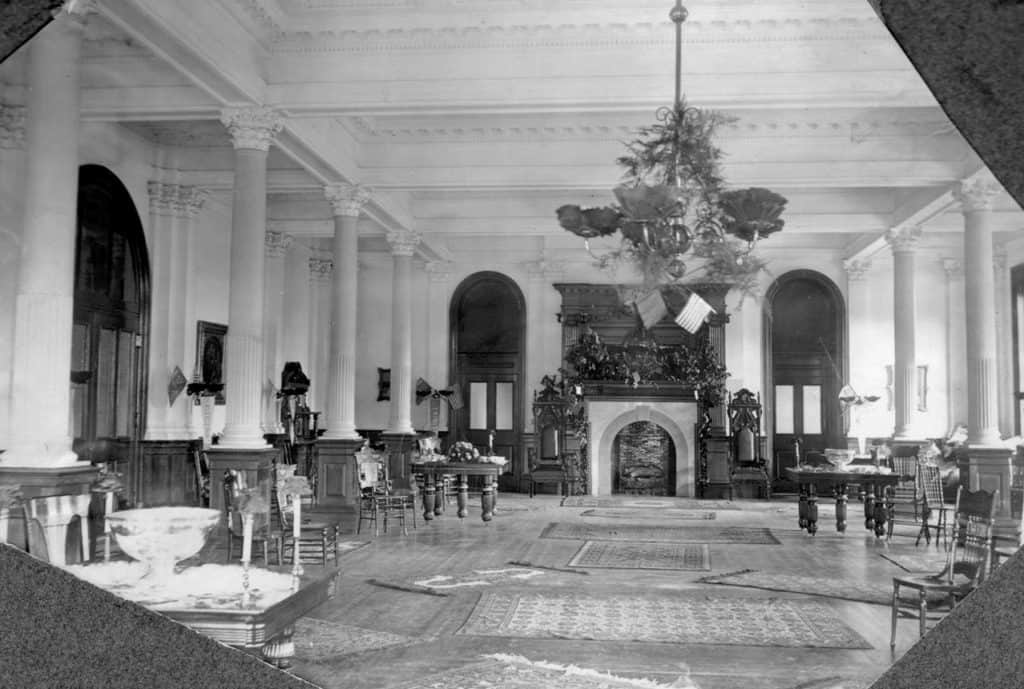
The student experience of living at Trinity in those earliest days surely would give pause to modern students; but the intrepid pioneer women seemed to enjoy the inconveniences as something of a lark, for, after all, the were now college women, an identity few women could claim at the end of the 19th Century. Elsie Parsons provided a colorful account of just some of the conditions the students experienced when living amid the construction of Main Hall:
“As for us students, the whole experience was one delightful picnic and it was a matter of much merriment to us that there was no gas in the house those first days, so that we had to perform all our evening ablutions by candle-light, that we had to wade through inches of sawdust and shavings and climb up temporary and delightfully precarious stairways. And if the absence of glass in the doors of our rooms necessitated the hanging of draperies — artistic and otherwise — it also singularly facilitated inter-communication and produced a comfortable feeling of interest in your neighbor’s doings.” (Sr. Columba’s history of Trinity, p. 67)
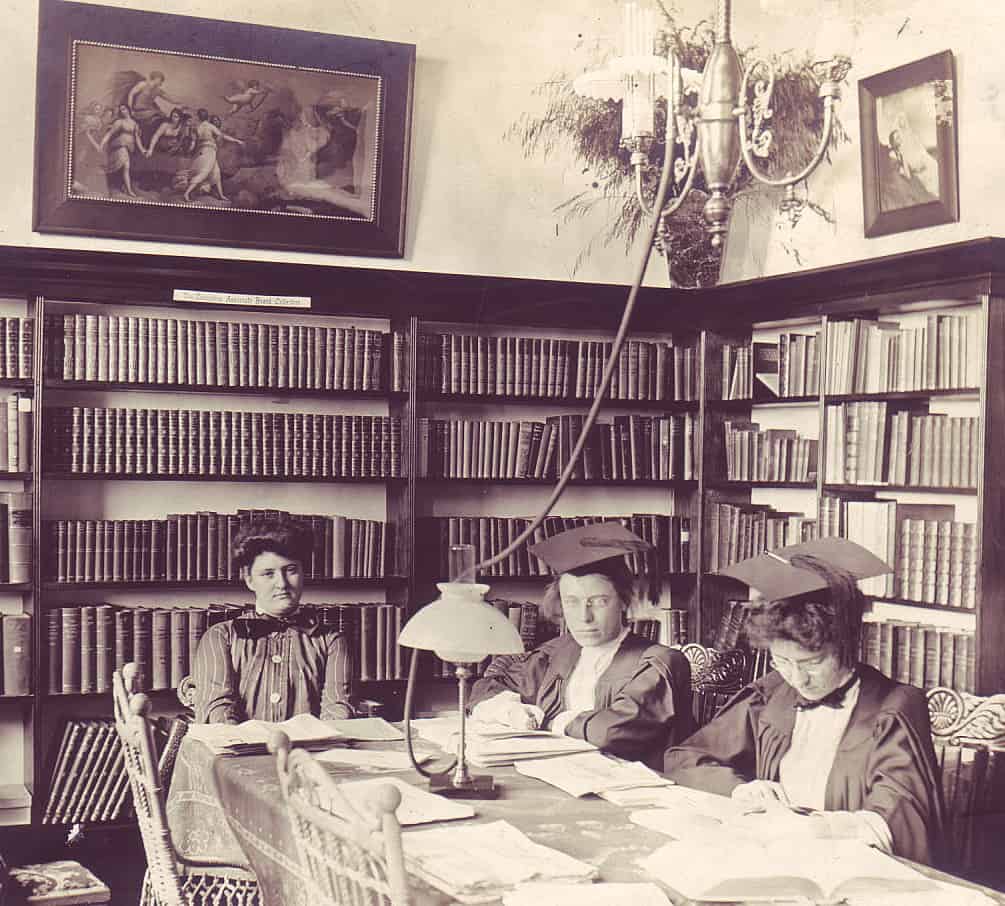
The pioneer Class of 1904 were aware of their place in history and did their utmost to lead the way for the students who enrolled after them. They began the tradition of class colors, choosing red as their color symbolizing their fierce spirit. They completed their studies and graduated long before Main Hall was finished, proudly joining the ranks of other pioneering women who attended the nation’s early women’s colleges at the dawn of the 20th Century.
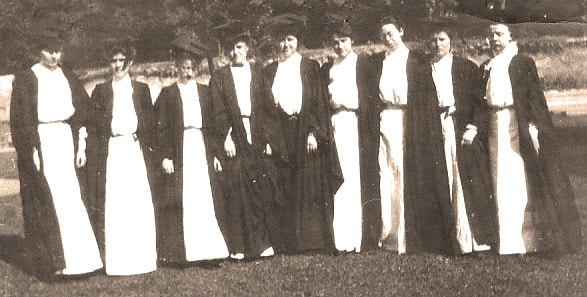
It All Started in 1897….
Three years before the pioneer women arrived in South Hall, Sisters Julia McGroarty and Mary Euphrasia Taylor were dreaming big. They believed that Catholic women had a right to obtain a college education equal to the education that men were getting in that day. They set about studying the other new women’s colleges of that era — Smith, Wellesley, Vassar, Bryn Mawr — and began to draw up plans for their new college, Trinity. In just a few short months, from March to August 1897, they developed plans, explored sites and began to organize support. They faced a great deal of right-wing opposition, they did not have much money, but they had the fire of their vision and determination and courage to persist. They secured articles of incorporation for Trinity College on August 20, 1897, and thus the revolution in women’s education began.
Across the next few years, we will trace the amazing story of our Founders and the history of Trinity. 2022 is the 125th Anniversary of Trinity’s founding, and 2025 is the 125th Anniversary of our first classes. 2029 will be the 125th Anniversary of the first graduating class, the Red Class of 1904. We look forward to sharing insights about Trinity’s history on these pages, and we are eager to lay the foundation for the new Trinity history that is yet to be written in the lives and works of the future generations of Trinity students.

